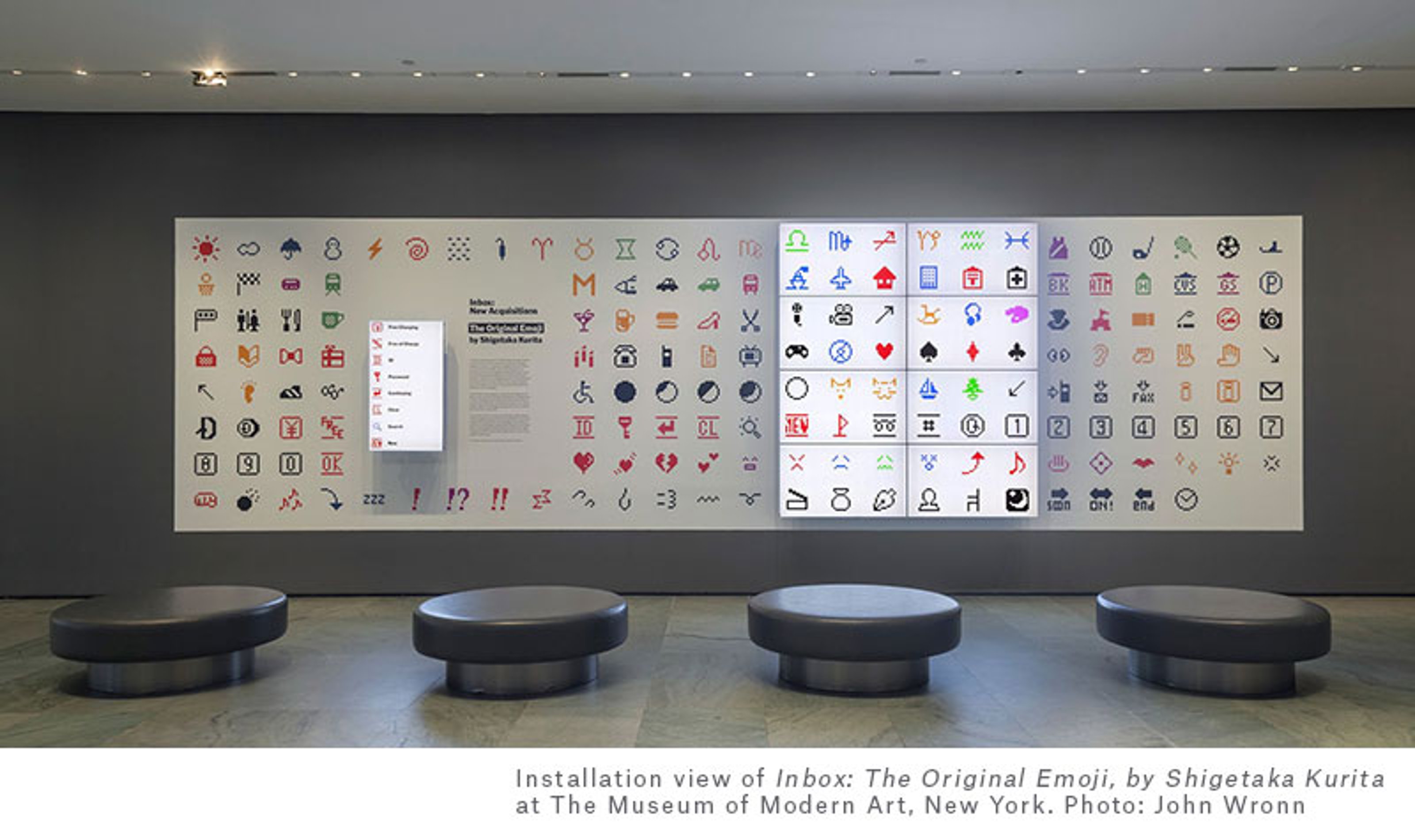Think Emoji are just a passing trend of the Instagram age? Back in 1881— roughly 100 years before the birth of the emoji as we know it today— emoji’s ancient ancestor, the emoticon, was first published in the American humor magazine, Puck. Made up of punctuation marks and other typographical characters conveying joy, melancholy, indifference, and astonishment, the emoticon was then categorized as ‘typographical art.’ After many quiet decades, it wasn’t until the 1990s that the humble emoticon made its resurgence in chat rooms across the world as an integral part of internet-speak.
There are differing accounts as to when the modern day emoji was born. Some say it was Softbank in 1997, however the most celebrated emoji set was created by Japanese designer, Shigetaka Kurita, for Japan’s main mobile carrier, DOCOMO. Kurita created a 176 character emoji set in 1999 for DOCOMO’s mobile platform “i-mode.” His intention was to design a simple set of characters for users to convey information in a concise way. The broad range of emoji finally gave people a way to insert emotion into their digital conversations and gave birth to an entirely new visual language, becoming a hallmark of the way people communicate.

For a decade, emoji were all the rage in Japan, and many of DOCOMO’s competitors, seeing their success, launched emoji in their own mobile products. But emoji only really took off in the U.S. when Apple added an official emoji keyboard to iOS in 2011, and Android followed in their footsteps several years later. Today, they are so iconic that the Museum of Modern Art (MoMA) acquired Kurita’s original Emoji set.
Each year, Unicode Consortium, a non-profit that maintains text standards across computers globally, adds hundreds of new emoji to their approved list. Unicode Consortium has an actual emoji subcommittee which congregates twice weekly to come to a consensus on all emoji-related matters.

Each year, Unicode Consortium, a non-profit that maintains text standards across computers globally, adds hundreds of new emoji to their approved list. Unicode Consortium has an actual emoji subcommittee which congregates twice weekly to come to a consensus on all emoji-related matters.
However, by 2014, people began noticing that all of the emoji representing work—a policeman, a detective, a school teacher, a construction worker—were all white men. As important as emoji was in depicting the language of the day, it was a language that apparently did not include women or people of color. Unicode was listening and, in 2015, they offered the ability to change skin tone and made emoji of women doing many different types of things.
Cultures from around the world are now depicted in countless emoji. They have become a way to transcend existing language, toward a global form of communication—one that everyone understands.